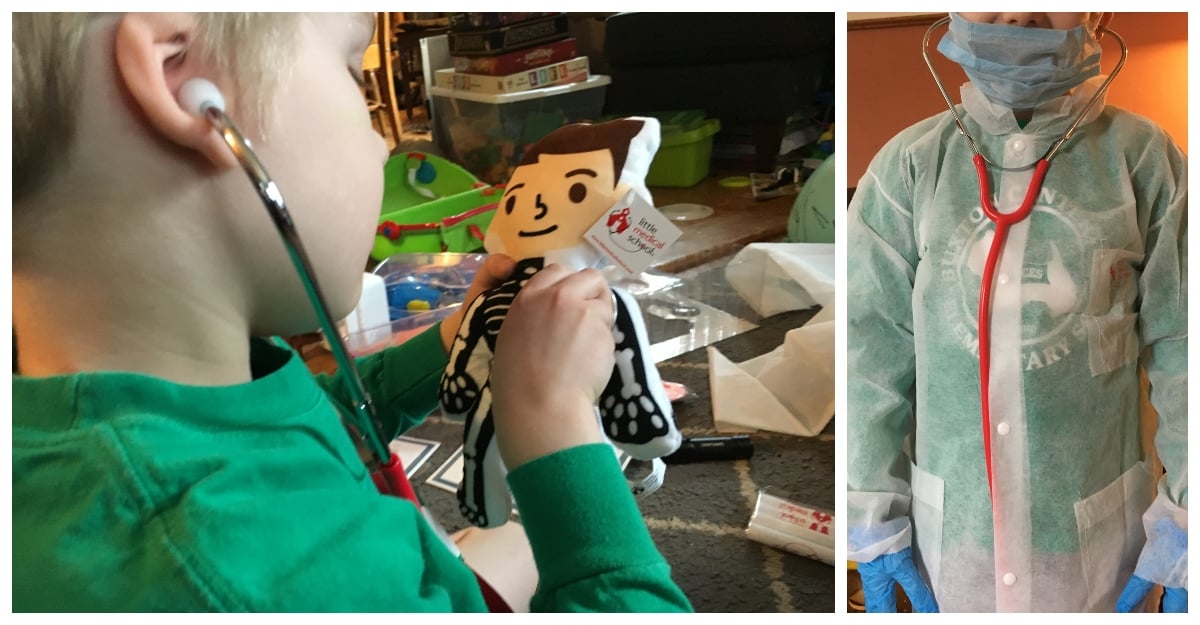
My eight-year-old is a science junkie. He wants to know how everything works. It’s not just that he asks me why the sky is blue, he wants to know why blue is blue, why we say the sea is blue when it’s not, why his eyes are blue but mine aren’t.
He’s a deep dive kind of guy. While we’ve been learning at home together, he has been going back and forth between BrainPop Jr., and Crash Course Science with Hank Green. Last week, he was all over DNA, I have no idea what the coming weeks will bring. Usually, by Friday, we are all feeling like butter spread over too much bread, but this past Friday was a wild exception.
For science class on Friday, we had a hands-on learning experience with Little Medical School – How to be a Sports Surgeon.
Without a doubt, this was the best second-grade science class of this semester of pseudo home school. The day we learned how to be a sports surgeon. Yes, we have graduated to medical school in our homeschooling adventures, thanks to “Classroom in a box” from Little Medical School. There is a whole range of kits to choose from, but in our house, we are now fully prepared for the next sports season, whenever that may be!
This kit was the perfect mid quarantine rejuvenation for a distance learning second grader. He was 100% engaged for the whole thing, and his siblings were chomping at the bit to get in on the action. This classroom in a box is geared towards sports surgery, the most particular “play doctor” kit I have ever seen, it even comes with a face mask, but please don’t steal it from your child.
Contents
Working stethoscope
Face Mask
Medical gloves
Elastic bands
Putty
Tommy John doll
Student Doctor Badge
Medical Coat
Markers
Bandage
The kit includes five activities that your child can work through on their own or with adult help, on their way to graduation. They even receive a certificate when they are done. This could easily be done without parental assistance, but I stayed with my son the entire time because it was such a pure joy to watch him light up with every activity.

The first activity is called “Lend Me a Hand.” There’s a brief description of the 27 bones in the hand, and a diagram showing you the different placement of the various phalanges and the difference between Metacarpals and Carpals.
This activity comes with an outline of a hand, and bone decals so that you can follow the diagram and assemble a skeleton hand for yourself.
 Activity two, “Skeleton,” leads you from a small piece of the skeleton to the skeleton at large. You are given some fun facts about your bones, and then a similar activity to “Lend me a Hand” in which you assemble a skeleton based on the diagram.
Activity two, “Skeleton,” leads you from a small piece of the skeleton to the skeleton at large. You are given some fun facts about your bones, and then a similar activity to “Lend me a Hand” in which you assemble a skeleton based on the diagram.
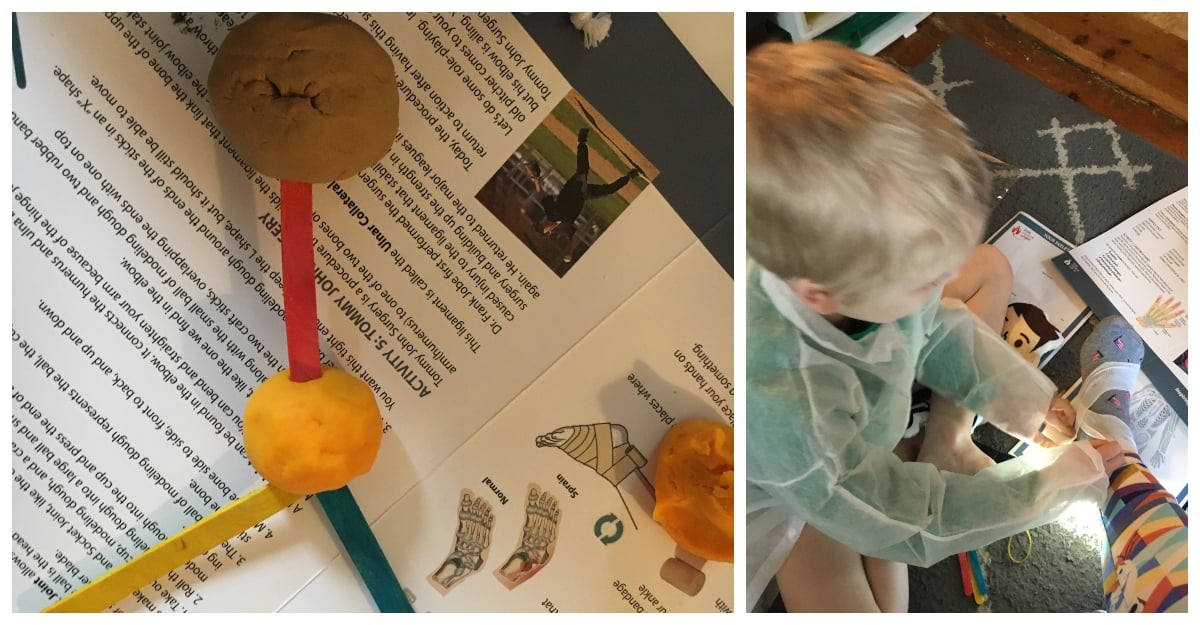 Activity three brings you away from the general structure to more particular areas of sports medicine in “Sprains and Strains.” You learn the difference between a sprain and strain and then get a volunteer involved, be it parent or stuffie, to practice your ankle wrapping skills.
Activity three brings you away from the general structure to more particular areas of sports medicine in “Sprains and Strains.” You learn the difference between a sprain and strain and then get a volunteer involved, be it parent or stuffie, to practice your ankle wrapping skills.
In the fourth activity, “Joints,” you begin to make a connection between the knowledge you gained about skeletons, and the knowledge about ligaments and tendons from the third activity. You are given some information and some putty. We ended up using play-doh instead of the putty that came with the kit because I didn’t trust my carpet and my child with the sticky substance provided. You walk through the difference between a ball and socket joint, and a hinge joint, while crafting them out of the dough to see how they work.
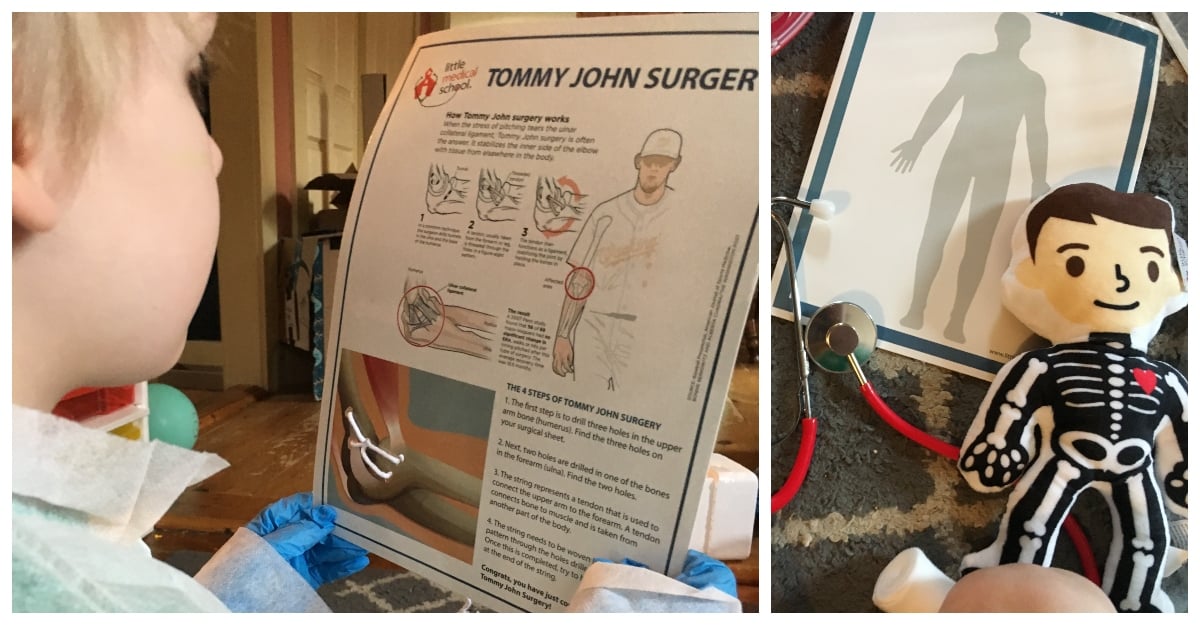 The final activity brings everything together in one of the more famous examples of sports medicine in baseball, ‘Tommy John Surgery.”
The final activity brings everything together in one of the more famous examples of sports medicine in baseball, ‘Tommy John Surgery.”
In this activity, you go into some of the history of sports medicine, and with your volunteer, and your Tommy John doll, role-play through the aches and pains of a young pitcher.
At the end of the project, the certificate was awarded. Along the way, we made little movies of Dr. Charlie in action and sent them to his second-grade teacher, who was thoroughly excited by the work he was doing. You can also share your graduation pictures with @littlemedicalschool.
Of course, now all the kids want to learn how to be veterinarians and pediatricians too!
This is a great way to kick start science class, or just to introduce something new to your home school repertoire. The Little Medical School kit can be used multiple times, though some pieces are easier to re-use than others. I find that my kids are now incorporating pieces of the kit into other areas of play, while some others are left behind. Tommy John has joined the ranks of bedtime stuffies, and the stethoscope is used to check the heartbeat of everything in the house, whether or not it is supposed to have a heartbeat!
GeekMom received this item for review purposes.
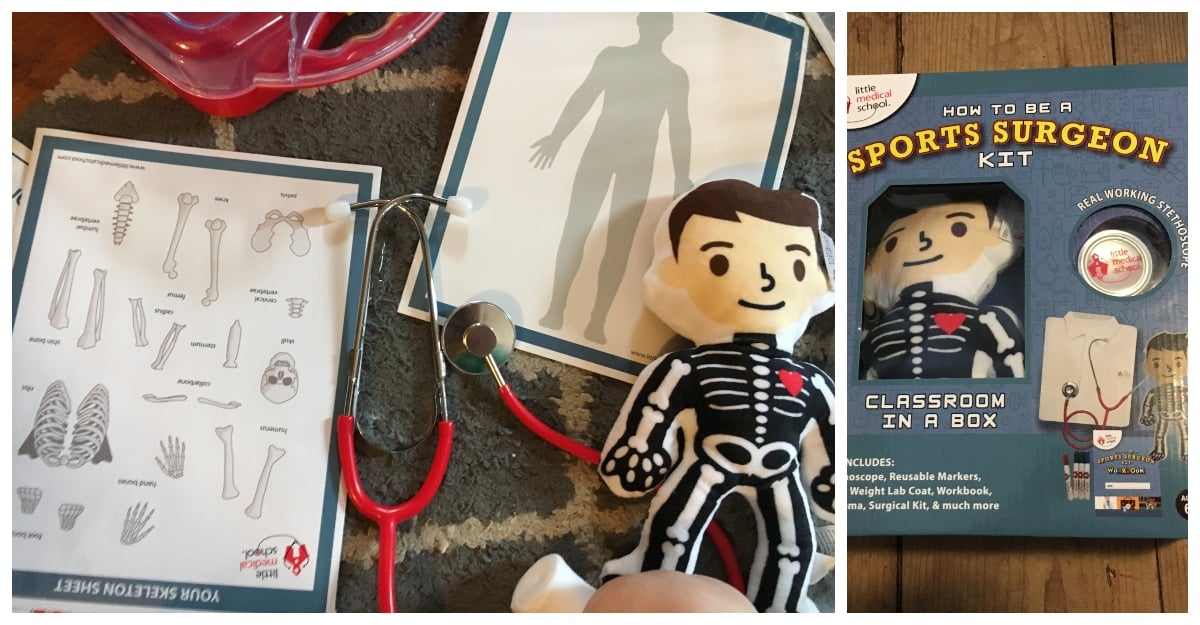



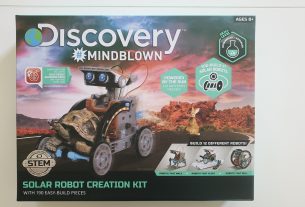
This idea is not new, but I still have to say that medicine is not the easiest profession. it is necessary to prepare the child in advance for the fact that he will have to learn a lot. My youngest daughter was not prepared for so many writing assignments in her first year of college. She had to use the help of the service – https://www.writemyessayquick.net/ This alone allowed her to maintain a balance between learning and rest. I wish I had spoken to her about this beforehand.
It’s great when children from an early age are interested in science, ask questions and have a thirst for information, in which case it will be easier for them to study at school and college, and if there are any difficulties with homework, specialists https://www.rush-my-essay.com/ can always help. Using such services will still be able to protect your child from nervous breakdowns associated with the amount of homework.